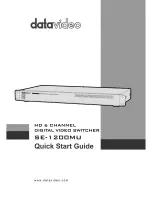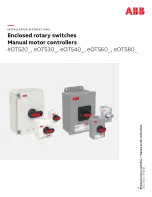
F
F
r
r
e
e
e
e
w
w
a
a
y
y
R
R
a
a
n
n
g
g
e
e
S
S
y
y
s
s
t
t
e
e
m
m
U
U
s
s
e
e
r
r
G
G
u
u
i
i
d
d
e
e
P
P
r
r
o
o
-
-
B
B
e
e
l
l
L
L
t
t
d
d
2
2
2
2
H
H
U
U
-
-
F
F
r
r
e
e
e
e
w
w
a
a
y
y
R
R
a
a
n
n
g
g
e
e
S
S
y
y
s
s
t
t
e
e
m
m
U
U
s
s
e
e
r
r
G
G
u
u
i
i
d
d
e
e
n
n
2
2
.
.
1
1
0
0
S
S
e
e
t
t
t
t
i
i
n
n
g
g
t
t
h
h
e
e
d
d
e
e
s
s
t
t
i
i
n
n
a
a
t
t
i
i
o
o
n
n
a
a
s
s
s
s
i
i
g
g
n
n
s
s
w
w
i
i
t
t
c
c
h
h
What’s the purpose of the switch marked ‘HIGHER DEST DECODE’? Well, because we
make all
Freeway
modules the same, in a router bigger than 16x16, you have to ‘tell’
each card what range of sources and destinations it’s assigned to. That’s the purpose
of this switch. The range is assigned as follows, where 0 is UP and 1 is DOWN:
H
H
i
i
g
g
h
h
e
e
r
r
D
D
e
e
s
s
t
t
D
D
e
e
c
c
o
o
d
d
e
e
S
S
w
w
i
i
t
t
c
c
h
h
SW 1
SW 2
SW 3
SW 4
Source and destination Range
0
0
x
x
1-16
1
0
x
x
17-32
0
1
x
x
33-48
1
1
x
x
49-64
n
n
2
2
.
.
1
1
1
1
L
L
E
E
D
D
i
i
n
n
d
d
i
i
c
c
a
a
t
t
i
i
o
o
n
n
s
s
Two of the three LEDs simply indicate that power is arriving at the board.
Freeway
routers all operate from two rails only (where others are needed these are generated
on the
Freeway
cards themselves). The two rails are +5V and -5V.
The third LED is labelled ‘HELLO’. This is useful in determining if the control system
has spoken to a particular board and, specifically, to tell you if you set the ‘level’ and
‘higher dest decode’ switches correctly.
When the control system sends a command (say in response to a button push), the
appropriate part of the router responds, depending on how the board configuration
switches are set.
If a board receives a command on which it should act, it ‘winks’ the ‘HELLO’ LED.
Meaning,
‘Hello, I’ve just received a command that’s relevant according to my
programmed place in the scheme of things.’
















































